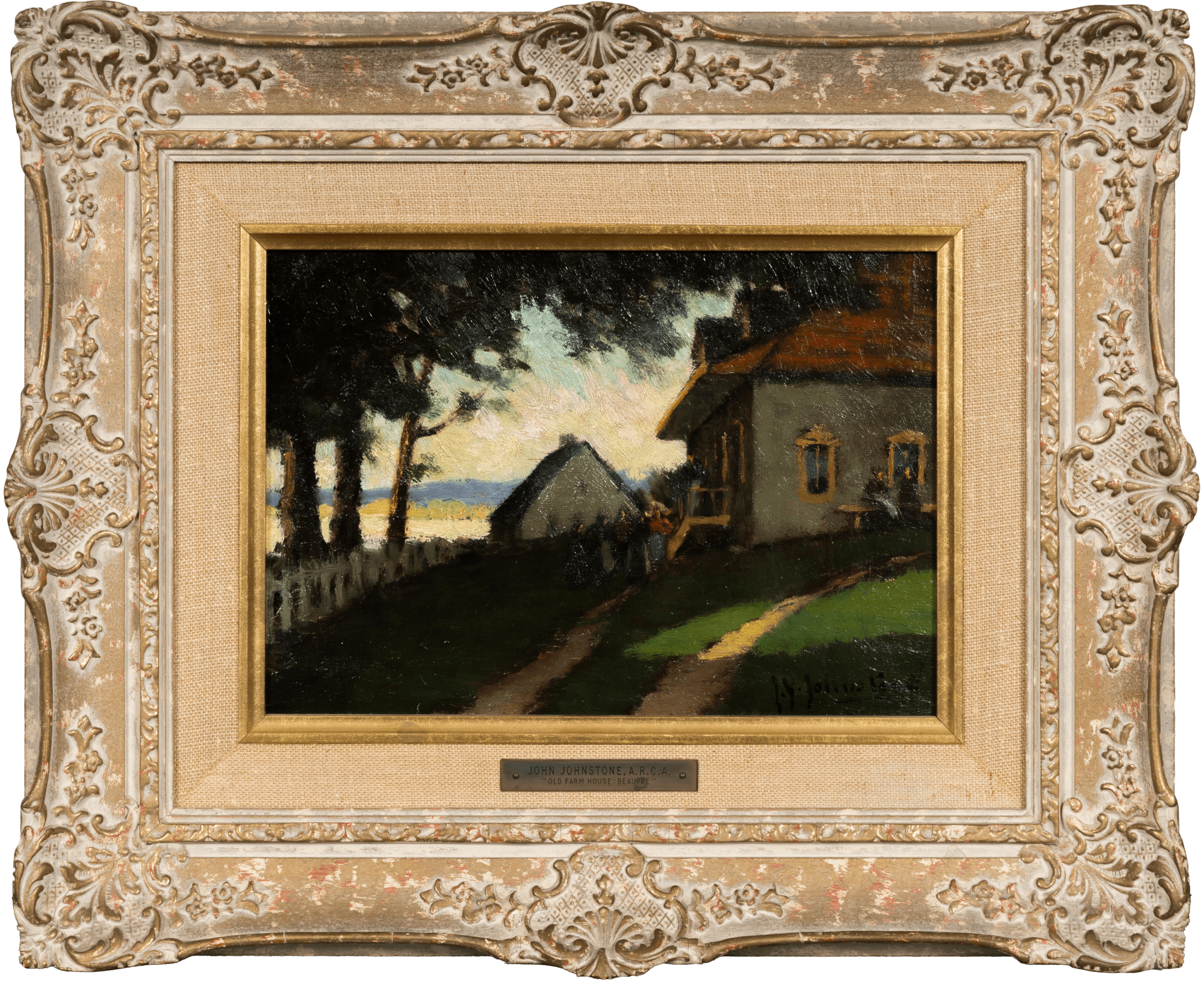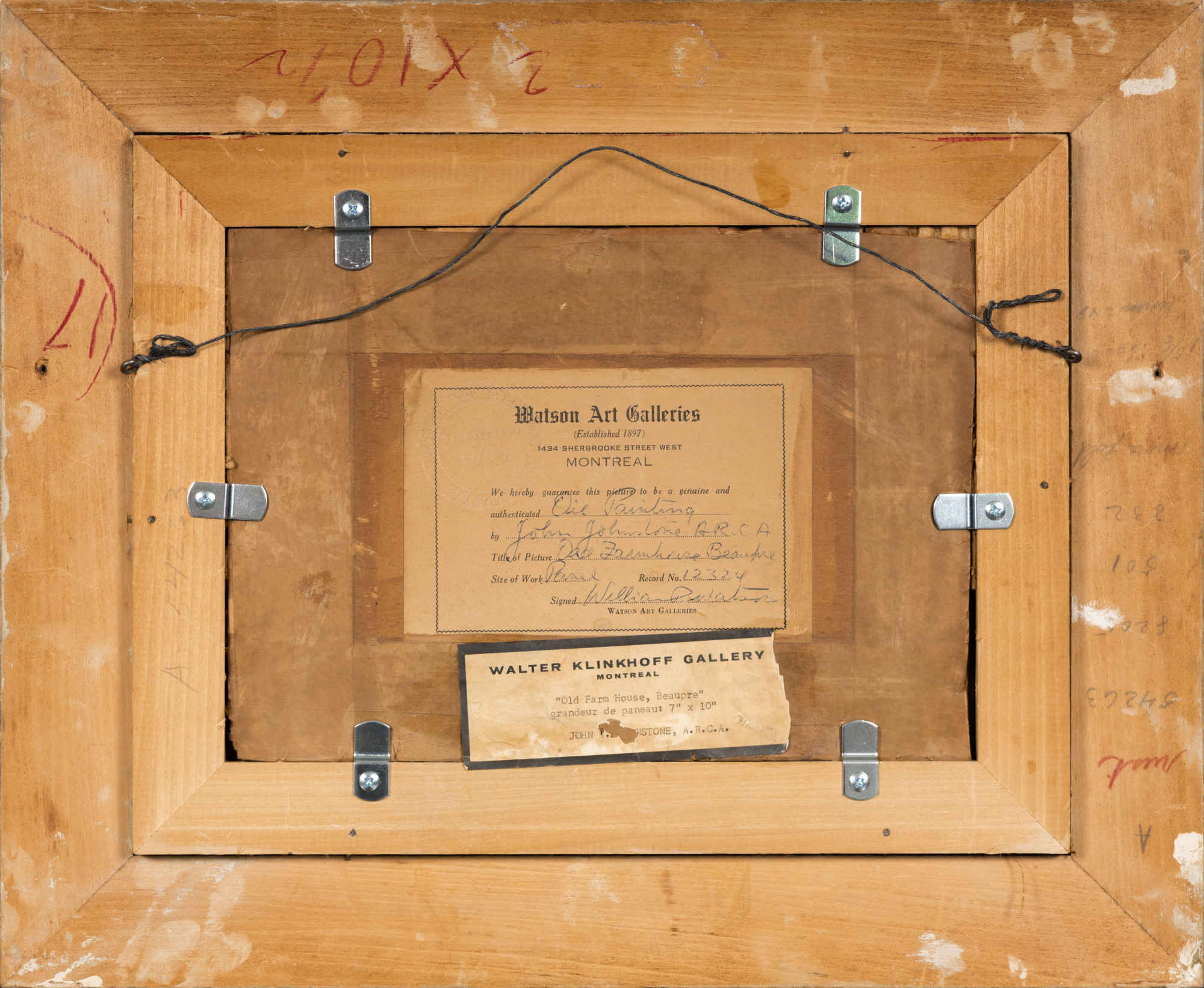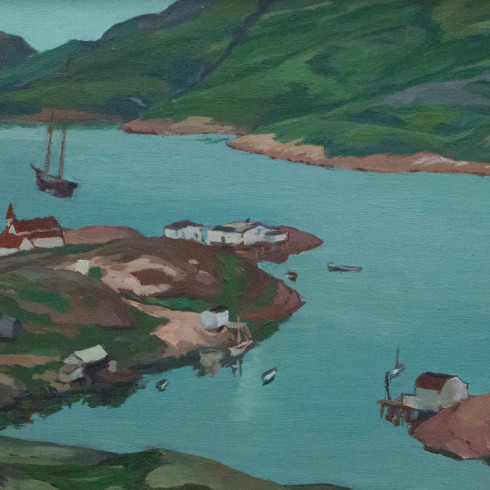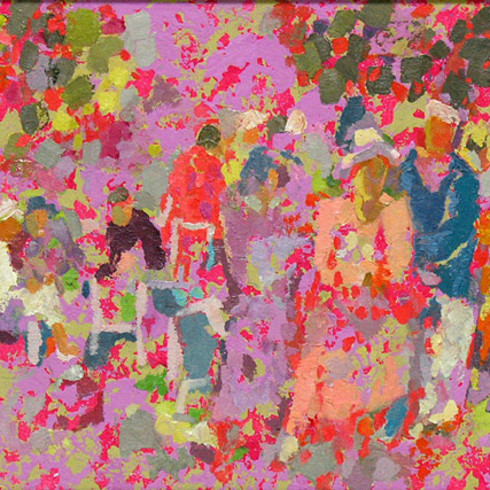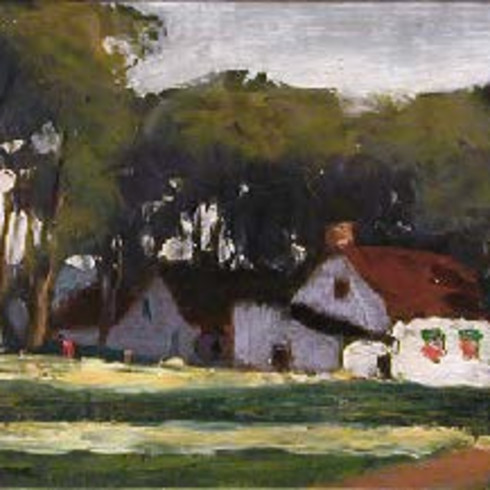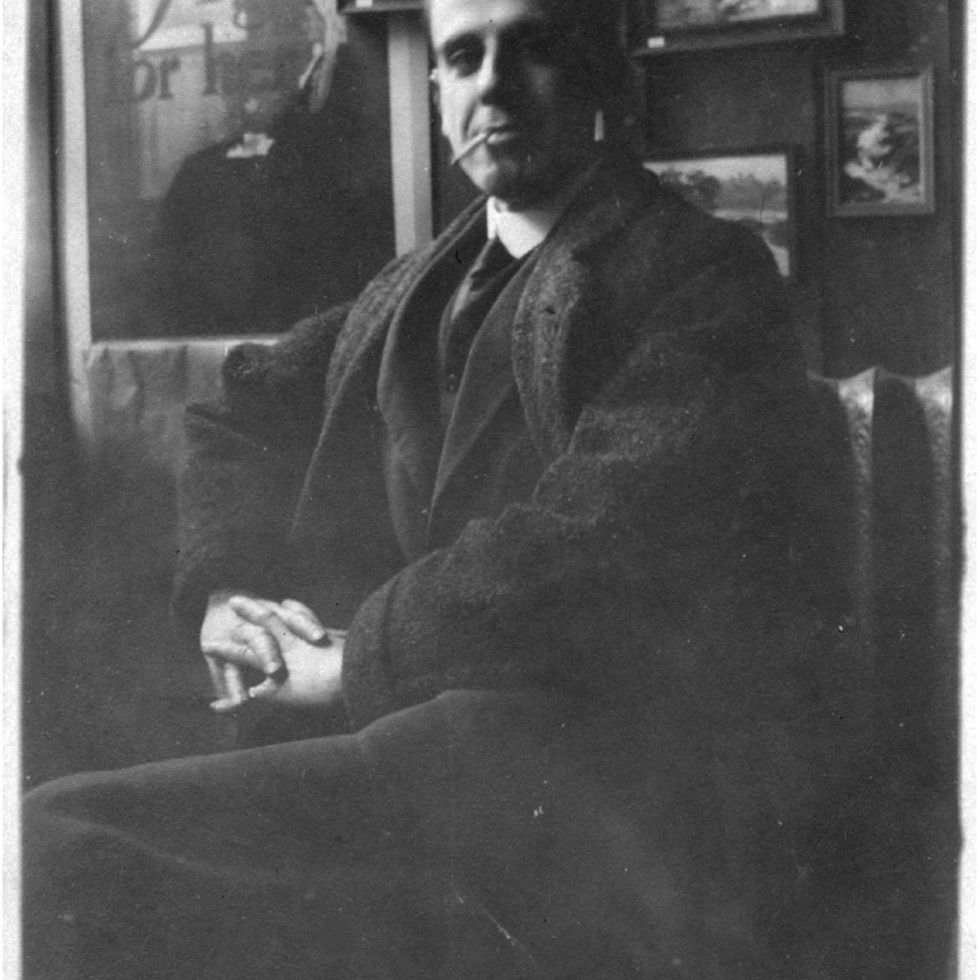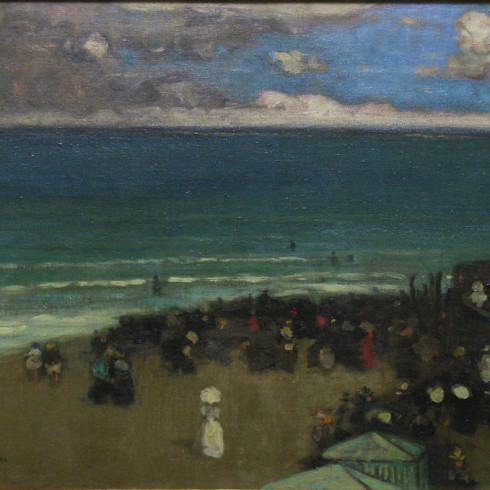Artworks for Sale
Old Farm House, Ste-Anne-de-Beaupré, PQ, 1929 (May)
17.8 x 25.4 cm
Inscriptions
signed, 'j. y. johnstone' (lower right); inscribed, ‘To Dear Wm Watson / from [illegible] / may [illegible] 1929 / Sketch of St anne de Beaupré, PQ’ (verso)Provenance
Watson Art Galleries, Montreal
Walter Klinkhoff Gallery, Montreal
Private collection, Westmount, Quebec
By descent to the present private collection, Westmount, Quebec
In his day, John Young Johnstone was an artist of distinction, one whose paintings stood out among those of his most accomplished peers, giants of the Canadian art world. From 1915, the beginning of John Young Johnstone's albeit too short mature career as an artist and through 1924, the National Gallery of Canada purchased six paintings by John Young Johnstone. In 1920, Quebec's Prime Minister Taschereau authorised the establishment of the Quebec Museum, to be opened two years forward. Under the Secretary of the province, The Honourable Athanase David, a jury was organized to select 6 paintings from the Art Association of Montreal and Royal Canadian Art exhibitions of that year to be the foundation for the future museum, one of which was Johnstone's Old Courtyard, St. Vincent Street [1]. The following year, Montreal's La Presse, in their review of that now iconic Beaver Hall Group exhibition of 1921 held over at 305 Beaver Hall Hill, cited among the most interesting works in the exhibition a small painting by Johnstone of Rue des Carrieres calling it "a real gem" ("un vrai joyau") [2].
Johnstone’s paintings reveal a modern Canadian artist painting in a personal interpretation of post-impressionism. His paintings can legitimately be compared favourably to the quality and sensitivity of those of Clarence Gagnon and James Wilson Morrice, but importantly, in a style of his own.
The outstanding exhibition and accompanying catalogue, 1920s Modernism in Montreal: The Beaver Hall Group, edited by Jacques Des Rochers and Brian Foss, provided an important and succinct summary of Johnstone's participation in Montreal's art community [3]. His formation and practice as an artist was very much in keeping with other aspiring and established artists of his place and time. This included studies at the Art Association of Montreal under William Brymner, then off to Paris, returning to Montreal where he contributed paintings to Art Association of Montreal spring shows as well as those of the Royal Canadian Academy of the Arts, membership in the Pen and Pencil Club, and the Arts Club of Montreal. Des Rochers and Foss disclose that Johnstone taught at various art schools, including the Monument National, the Arts Club and the Women's Art Association [4]. The year following Johnstone’s death, 1931, the Arts Club held a memorial exhibition in his honour.
Still today, little verifiable detail is known of the life of this enigmatic personality, John Young Johnstone. The Lovell Directories of Montreal for the years he contributed paintings to Art Association of Montreal and Royal Canadian Art exhibitions locate him living with his widowed mother Kate Johnstone at 233 Ontario Street West until 1920. Walters's description of him being a "bastard child" is, thus, unlikely. There is no evidence to suggest that "Kate" was French Canadian. Even the notion that he was itinerant, more so than perhaps other unmarried artists, may not be accurate [5]. The same Montreal directories list him in a flat on University just north of the old Montreal High School, east of the main McGill University campus, from 1920 until after 1928 and probably until he left for Cuba. With the same fixed address for the better part of 10 years until shortly before we know he died in Cuba might imply Johnstone more settled and stable than the vagabond others have suggested. His favoured identifiable Canadian painting places beyond Montreal appear to be primarily the Beaupré and Ile d'Orleans regions, ones captured in oils by numerous artists prior to him, Brymner and Cullen as examples. The facts surrounding his death at the relatively young age of 43 are unknown beyond the press reports of the day, reading that he died in Havana after a brief illness [6]. Citing as a reference an unsubstantiated and brief report in Toronto’s Globe of February 14, 1930, ”Canadian Artist Dies In Poverty,“ Colin MacDonald in the often go to resource for biographies of Canadian artists writes in his entry for Johnstone, "In 1930 he went to Havana, Cuba and somehow became destitute and died there at the age of 43.” Adding to the intrigue, MacDonald then concludes, “ Those who still enjoy his paintings wonder if his tragic ending could not have been prevented [7].” The Globe report and other similar ones published appear to be based on the same Canadian Press Dispatch.
_________________________________
Footnotes:
[1] According to Michele Grandbois, "Suzor-Coté et la collection du Musée National des beaux-arts du Québec", Journal of Canadian Art History, Vol. XXVI, 2005, p. 148, the other paintings selected were what are now iconic paintings by Albert Robinson, Suzor-Cote, Clarence Gagnon, Maurice Cullen and Alice Des Clayes.
As an aside, if one has doubts as to the ability of Alice Des Clayes, we refer you to the canvas by her the jury chose at the 37th Spring Exhibition, Place Jacques Cartier, a painting Professor Laurier Lacroix reproduce on the title page to his exhibition of 1996/97 Peindre Montréal, 1915-1930 Les Peintres de la Montée Saint Michel et Leurs Contemporains. A more elaborate description of the selection process including members of the committee and the works selected is described by Professor Lacroix in “La collection comme temps de la Nation. Les premières acquisitions du Musée de la province de Québec en 1920” in “Les cahiers des dix,” no. 62 (2008).
Professionally we take this opportunity to tell you that we have had the pleasure of serving three daughters of Senator Athanase David. Also we have acted for other relatives. This was a gentleman of great taste. A number of artists of the generation attended at least one of his daughter’s weddings and gave works of art as gifts. In our experience any work of art with his provenance is one of great quality.
[2] "Au fil de l'heure : Le Groupe Beaver Hall", La Presse, 20 January 1921, p. 2. ; The Johnstone of Rue des Carrieres called "a real gem" ("un vrai joyau") in that Thursday edition of La Presse on January 20, 1921 may in fact be the same sketch he exhibited and offered for sale unsuccessfully at a price of $20 in the Art Association Exhibition of 1917.
[3] Ibid.
[4] Jacques Des Rochers, Brian Foss, et al., 1920s Modernism in Montreal: The Beaver Hall Group, (Montreal: Montreal Museum of Fine Arts, 2015), 300.
[5] Evelyn Walters, The Beaver Hall Group and Its Legacy (Toronto: Dunburn Press, 2017), 87.
[6]Colin MacDonald, "John Young Johnstone", Dictionary of Canadian Artists, vol. 3 (Toronto: Canadian Paperbacks, 1975), 571.
[7] Ibid.






